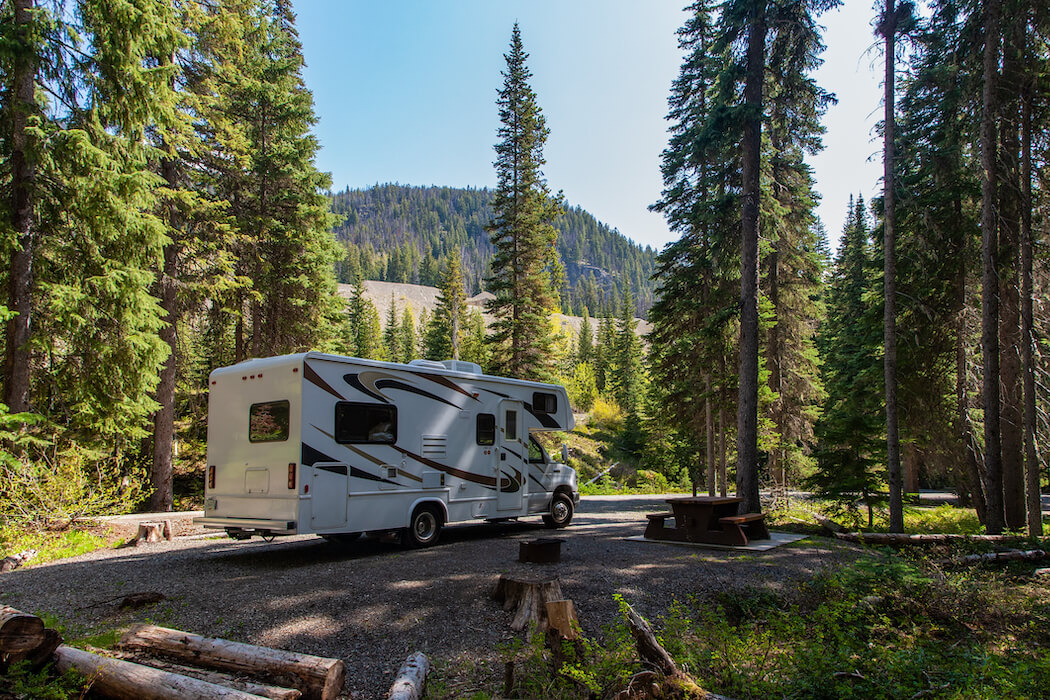With the weather getting warmer across the country, recreational vehicle (RV) owners are dusting off their ‘home-away-from-home’ in preparation for adventure. While the extent of these journeys will vary, many owners did not purchase their RV with the intention of only staying on well groomed roadways. Unfortunately, a myriad of issues can arise, for a variety of reasons, in which case CEP can help you untangle the cause.
While some owners purchased their RV to explore full-service campgrounds – accessed by maintained gravel roads, others will venture further out in the backcountry in search of a piece of the wilderness they can call their own for a while, and these locations are often accessed by unmaintained roads in various states of disrepair.

Regardless of the camping style, from mild to wild, the RV and its systems will be tested over time and can be damaged. To better understand the types of damage that can occur, it is important to understand the construction of an RV. A typical RV has a structural steel frame, connected to the suspension system and the axles, and has a coupler at the front to connect to the tow vehicle. On this frame, the living area is built using either wood framing and metal cladding (commonly referred to as “stick and tin” construction) or laminated panels with aluminum framing and fibreglass cladding. Both methods have their advantages, with laminated panel construction being lighter and typically more expensive, and a wood frame construction being easier to perform repairs on.
Both stick and tin and fiberglass constructions can be damaged by travelling on rough and unpaved terrain, or by being overloaded. Many RVs have a maximum cargo weight rating, which can easily be exceeded if the owner is not mindful of the weight they are carrying, particularly with extra-light RV models. A frequent problem is when the weight of the water in the fresh water tank and gray / black water tanks is not considered in addition to the weight of items inside the RV. Not only must the weight of the cargo and the water be accounted for, but the distribution of the cargo inside the trailer should be balanced to avoid excessive stress in the structural elements, and possibly performance changes that could lead to a loss of control.
Damage from travelling on rough and unpaved terrain usually manifests itself in the form of cracks in the structure of an RV. These cracks tend to propagate progressively and can go unnoticed for extended periods of time until the damage is extensive, when issues such as frame misalignment, out of plumb side walls, uneven floors, uneven tire wear, and unusual trailering (movement) characteristics begin to occur. In laminated panel RVs, cracking of the sidewalls can also occur due to frame damage, which is less common in stick and tin style constructions. These types of damage can be similar to those seen from sudden events, such as impacts, so determining the cause of RV damage may require more than one engineering discipline. To ensure that all aspects of the damage are addressed, CEP Forensic utilizes different types of expertise, such as structural engineering, collision reconstruction, and materials engineering, as necessary to determine the cause of damage.
Our structural engineers look for signs of structural distress, inadequate connections, bending and shear failures and other damage – helping to assess whether damage is a result of use, manufacturing, design, or other sources. Our materials engineers assess the materials and assemblies of the RV, including welds or fasteners, looking for defects, and allowing us to definitively pinpoint the sources of damage. Finally, our accident reconstruction team assess reported impacts and, in collaboration with our materials and structural engineers, can determine whether the observed damage is consistent with reported events.

In addition to structural damage, RVs also frequently sustain moisture-related damage. This is frequently referred to as a failure of the ‘envelope’, which is the term used for all the components that are designed and installed to keep the outside weather on the outside. The envelope system of the RV is unlike that of a typical house because RVs pose unique challenges to keeping the water out. Not only do RVs sustain motion and twisting during travel, but all the components are made to be as light weight as possible and RVs are typically kept outside in all weather conditions. The result of all this is that the demand on the building envelope is high, regular maintenance is required and failures / leakage can occur because of numerous issues. In order to decipher these, sometimes peculiar, failures, CEP Forensic also has building envelope engineers that can investigate RV moisture-related damage to determine the cause of loss.
Regardless of the type of issue you are seeing with an RV claim, do not hesitate to contact the experts of CEP Forensic so we can help you with any questions related to RV losses!
